From the time since they were constructed there was always the risk of any locomotive getting into a contretemps with others, or for those machines with a glint of wanderlust in their cab windows to choose to beat their own path, often with dramatic results. This is not to make light of those railway workers that were injured or lost their lives in service to the railways, rather a look at the results of the unexpected happenings.
1959
High winds plagued the east of England during the last week of October, on 27th D5020 was struck by a falling tree whilst on the East Suffolk lines.
At about 2.45am on November 10th whilst hauling a coal train from Snowdon Colliery D5000 lost control of its train at Faversham. The train ran through a sand drag, demolished the buffer stops, with the locomotive completely derailed and fouling the main line. The impact severely damaged a short length of the up main line, causing single line working to accommodate the morning rush hour. The engineers then obtained complete possession, having D5000 rerailed by late afternoon, with all lines open by late in the evening. Engines in attendance were 31874 & 31583 with two cranes.
1960
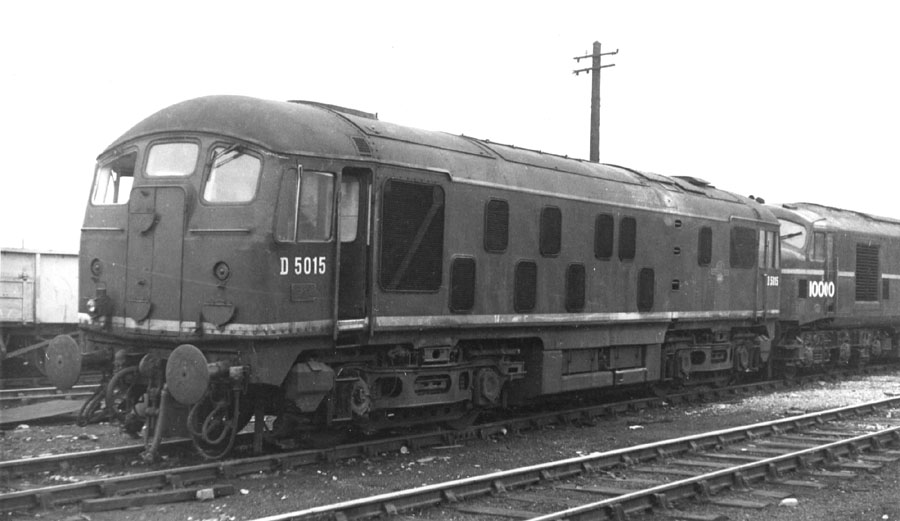
December 17th 1960: D5095 working the 12.53am Whitemoor - Broxbourne coal train hit a derailed vehicle in the 7.14pm Romford - Whitemoor parcels at Stretham Fen, Cambridgeshire at about 2.40am. D5095 suffered considerable cab damage whilst the force of the impact derailed the locomotive and sent it down an eight foot high embankment.
1961
May 1961: D5030 noted at Stratford depot with major collision damage to the No.2 cab on the secondman's side, Works attention would definately be required.
1962
D5050 was noted at Stratford depot on September 9th with minor collision damage to the No.1 cab on the driver's side.
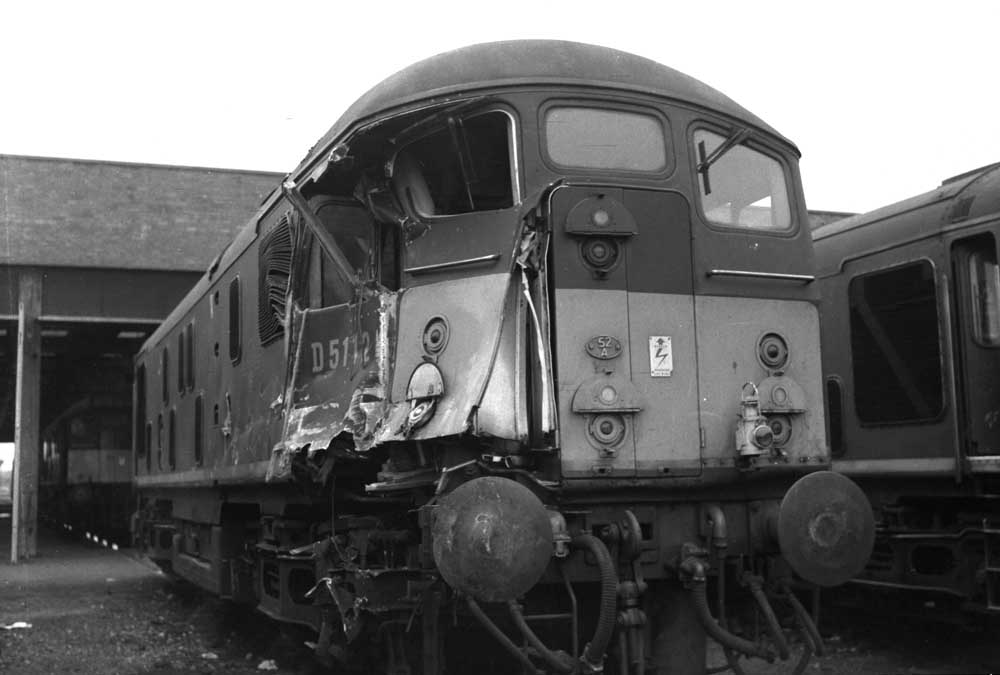
D5025 sustained collision damage to the No.2 cab, which is believed to have occurred early in December 1962 after the locomotive collided with some carriages in fog. By January 1963 D5025 had reached Derby Locomotive Works for repairs.
1963
On the last day of 1963 D5000 was noted at Willesden with collision damage to the driver's side of one cab, a quantity of the cab side panel had been peeled back.
1964
An unidentified Brush 2 hauling a Norwich - Bishopsgate goods on February 17th, became derailed on the London side of Shenfield station, blocking both mainlines, strewing wreckage over Ĺ mile with much damage to the permanent way. Bearing down rapidly on the scene was the 11.50pm Liverpool Street - Ipswich with D5041 in charge, which suffered considerable damage in the ensuing derailment. The lines were reopened within twenty four hours with a 20 mph speed limit. D5041 required a visit to Doncaster for repair, being noted there in March.
1965
D5018 was noted off the rails at Kilburn on July 2nd 1965. The locomotive damaged an overhead line stanchion, causing minor damage to the No.1 cab.
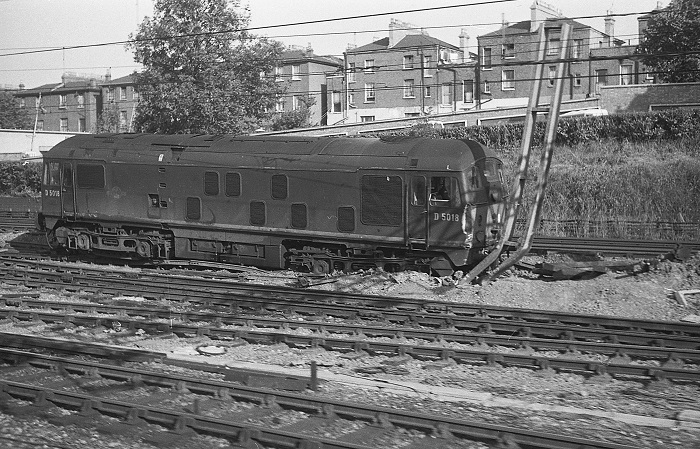
Date uncertain: D5133 noted at Derby Locomotive Works with considerable damage to the No.1 cab, particularly the 2nd man's side (green livery, small yellow ends).
1967
The recently improved LM electric service suffered a major disruption on February 28th following a collision at the south end of Stechford station, at the junction of the Aston loop line. The 13.15 Manchester - Coventry powered by green liveried AM4 026 traveling at about 70mph ran into the side of D5002 running light as part of a run-round manouevre, coming off the down line of the Aston loop. The almost stationary locomotive and the AM4 met on the diamond crossing, the locomotive sustained only minor damage, the high speed of the passenger train derailed all the coaches, the leading two coaches were thrown onto their sides demolishing two gantries and a signal. They were seriously damaged and contained most of the passengers, the emu driver, W D Burt of Stoke on Trent was killed in the wreck along with eight other passengers. Four other Stoke drivers learning the road were seriously injured. All lines were blocked with much damage to the overhead equipment. It took the permanent way department three days of hard work to clear the wreckage and make the lines reusable. The leading coach of the AM4 unit, M75670 was cut up on site whilst 70493, 61638 & 75690 were removed to Wolverton where the badly damaged 70493 languished, not being broken up until 1976.
Another collision bedeviled the West Coast mainline, this time at Rugeley on August 5th. Here the 07.35 Stafford - Rugby, waiting at the platform was run into from the rear by a runaway Trentham - Lea Hall coal train. The impact lifted the rear coach into the air, the cab of the coal train locomotive, D5090, was badly crushed, requiring the assistance of the fire department to free the driver. The damaged diesel was removed to Derby Works for evaluation and repair.
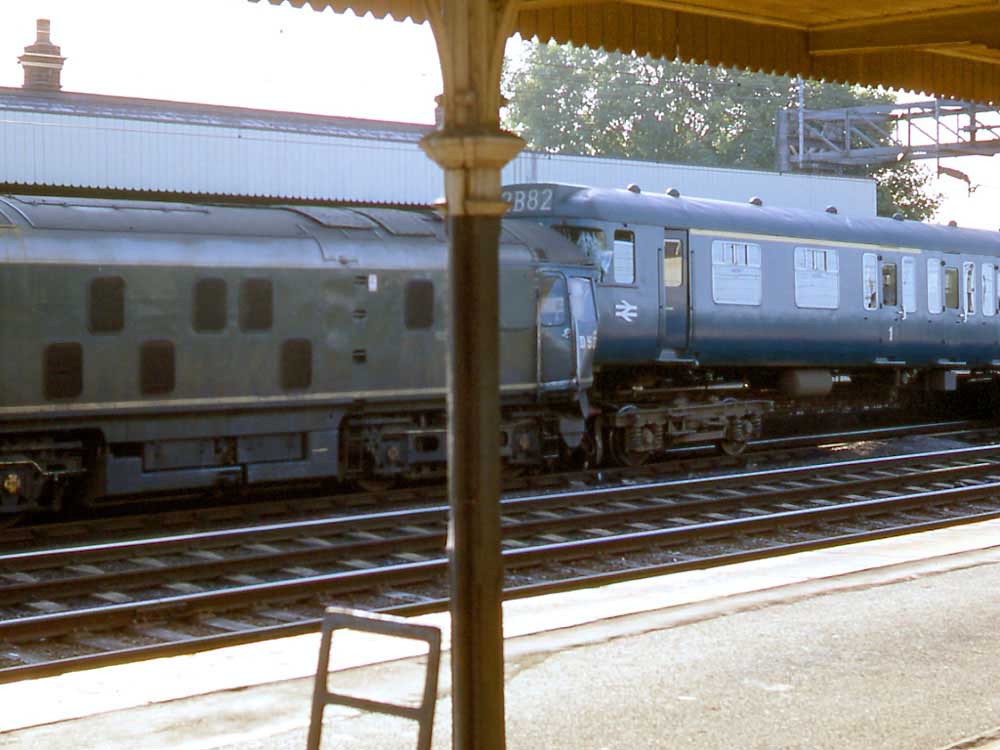
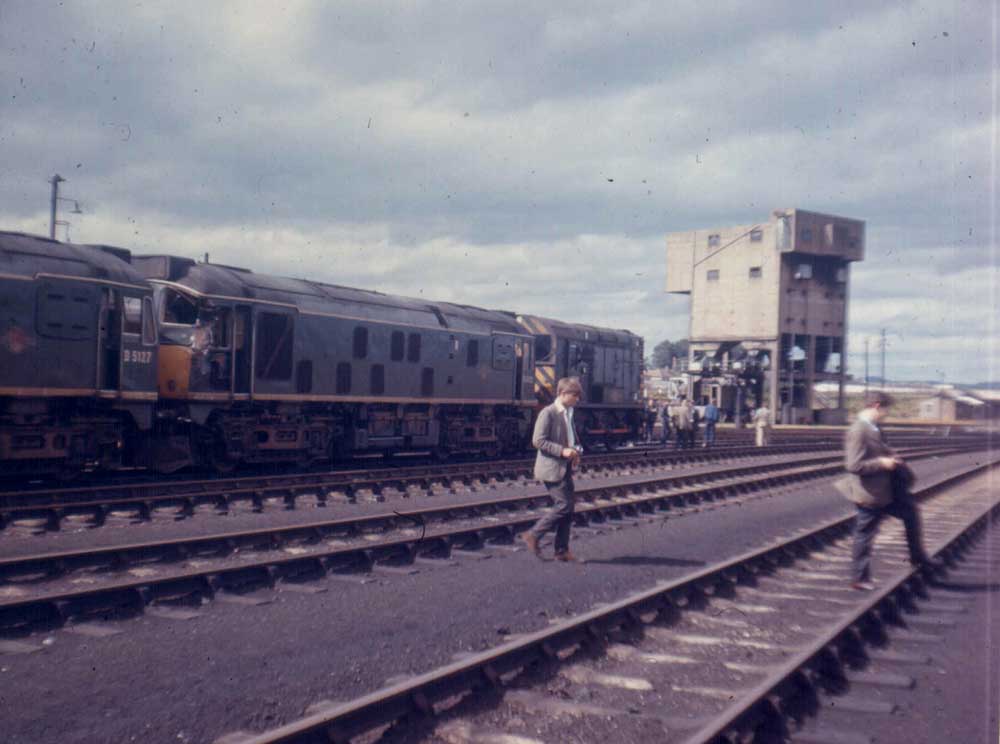
November brought bad news for the BR Sulzer Type 2 fleet with the withdrawal of the first of the class, Eastfield based D5051. It had been working coal empties to Waterside when fire broke out. It was eventually removed to Inverurie for spares recovery with the remains being broken up by August 1968. This would be the only member of the class broken up here.
1968
January/February: D5108 was noted at Derby Works with collision damage to the 2nd man's side of the No.2 cab, requiring an estimated £1,250 in repair costs.
Destruction and death occurred on September 9th at Castlecary when green liveried, headlight equipped D5122, running light ran into the rear of the lightly loaded 08.46 Glasgow - Edinburgh dmu. The Type 2 had just worked the 07.20 Perth - Glasgow and was returning north. The two crew on the locomotive were killed. The actions of the dmu crew prevented the fire spreading to the other coaches. Fire damaged blue & grey liveried SC79092 and the diesel locomotive were removed to Bonnybridge sidings, with the latter moving on to Eastfield on September 24th being withdrawn that same month. By early October the machine had reached Glasgow Works for stripping. This was the second of the Class 24ís to be withdrawn, though it would linger in a heavily stripped state at Glasgow Works until finally broken up in March 1971.
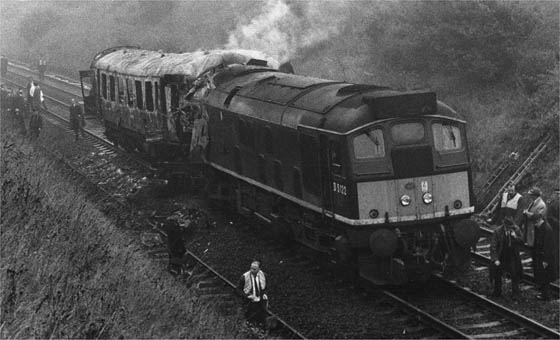
1969
Chaos reigned at Chester in the early hours of July 9th after the 02.25 Birkenhead - Etruria iron ore train, weighing approximately 1,000 tons and hauled by 1617 was reported out of control and diverted into the diesel depot to avoid the station area. Two locomotives and eleven wagons were derailed, with 5031/43/93 & 5138/39 extensively damaged. The crew escaped major injury, though were treated for shock, not surprisingly. The latter four machines were quickly placed to store at Chester and then withdrawn during August, joining stored machines 5007/10/17/19 already there. No doubt because of the loss of these five Type 2ís it was not unexpected that a number of the stored examples would be returned to traffic, those reinstated were 5010/11/16/17.
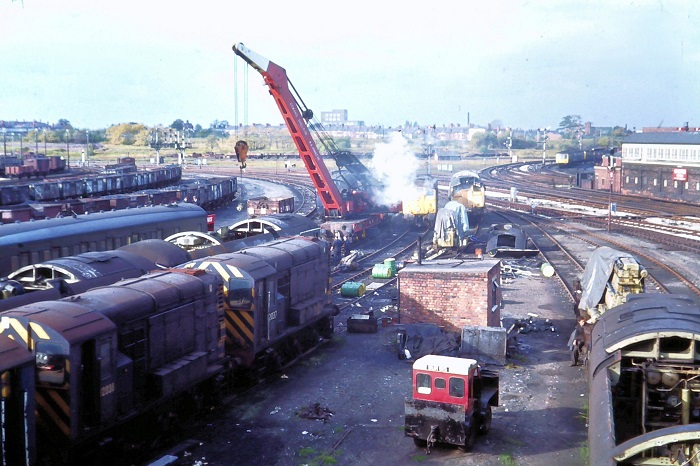
1970
On March 6th the WCML at Stafford sustained serious delays when 5080 hauling three tankers caught fire. This led to the power being switched off with major delays on both sides of the obstruction. 151 assisted E3118 into Wolverhampton High Level where the Peak ran round and took the train on to Crewe via Shrewsbury, running about two hours late, power was finally restored about 10.30pm. Type 2 had reached Derby Works by April for repairs.
July brought another withdrawal for the Class 24 fleet, 5088, another Crewe based machine. On May 1st whilst working the 4A19 14:33 Chester - Camden freight the locomotive caught fire at Beeston Castle. The locomotive was removed to Derby Works for inspection and withdrawn there on June 26th.
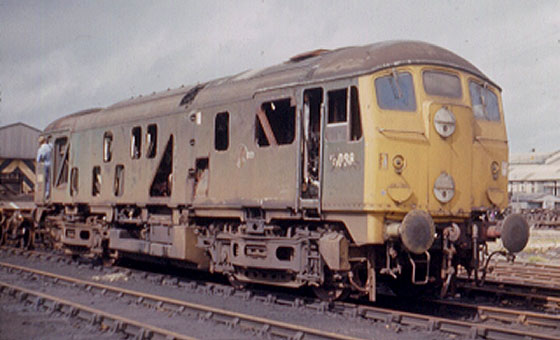
1971
On March 22nd 5014 was noted at Derby Locomotive Works for accident repairs estimated to cost GBP850.00. The damage was to the upper half of the non-BIS side, with scrape like damge from the 2nd man's cab side, radiator grill and two small grills.
A shunting accident at Inverness between 5131 and 6855 late in July led to the Type 2 being put on decision. Retirement finally came in September being noted at Glasgow Works by early October, where it was quickly broken up.
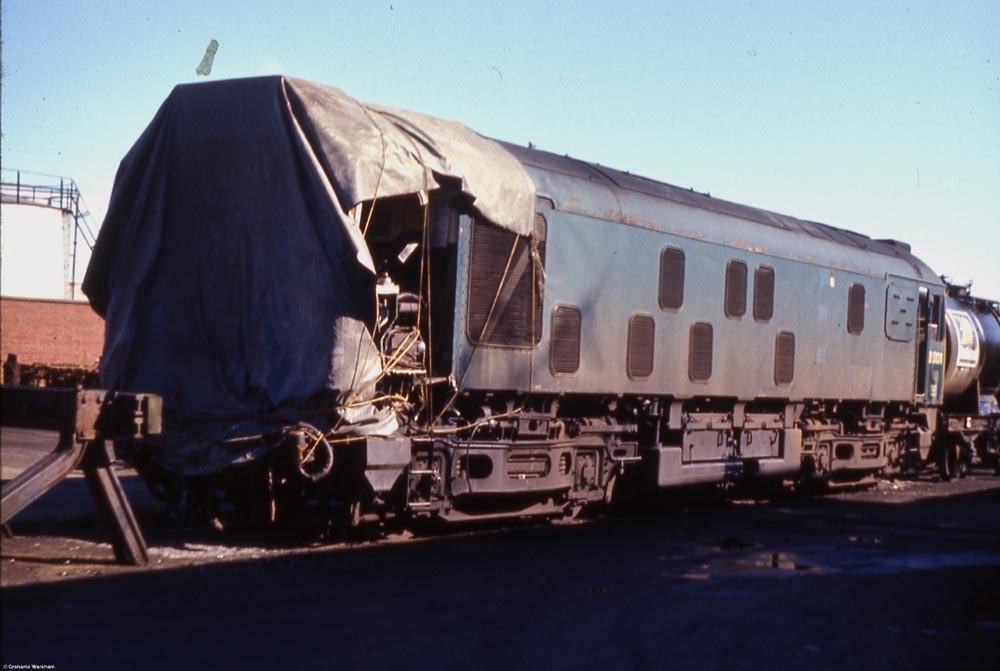
1972
During the evening of May 8th 5028 in charge 38 wagons on the 19.30 Ellesmere Port - Mold Jcn, via Helsby ran away at Guilden station, eventually colliding, in platform 11 at Chester station with dmuís 51195 & 56229. The diesel ended up partially on top of the railcars, the third wagon, a sulphur oil tanker exploded bringing down parts of the roof. Most remarkably amidst all the destruction no serious injuries were reported. The battered remains of 5028 along with the wrecked dmuís were removed to the goods yard official withdrawal came on June 4th.
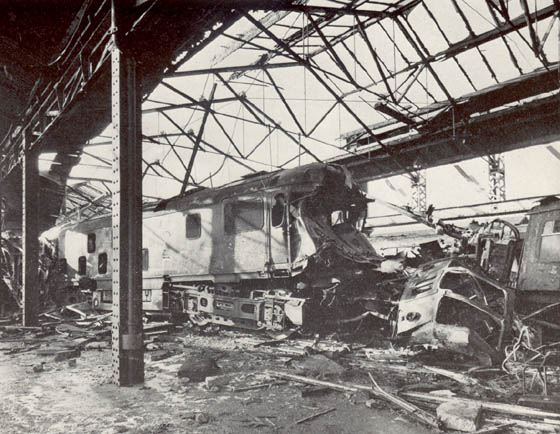
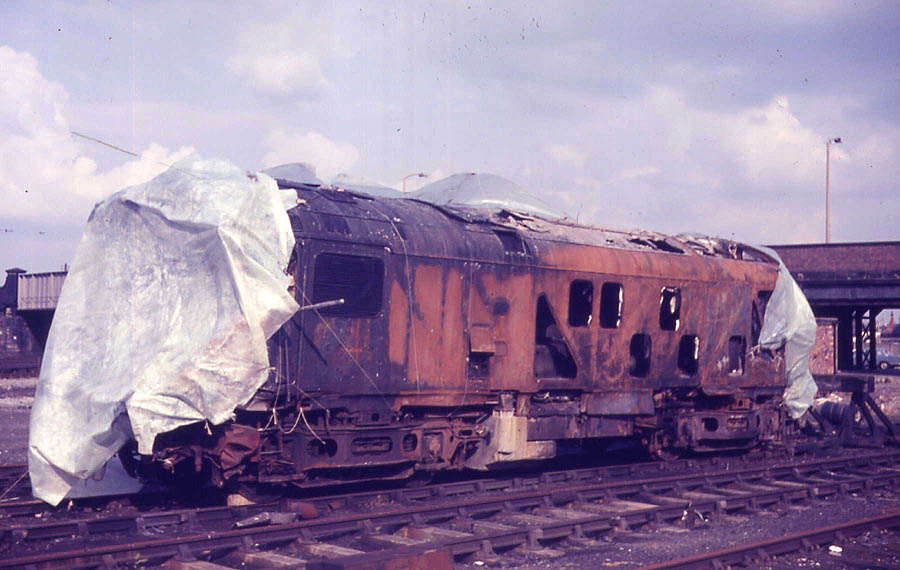
On September 20th 5149 caught fire on an Auchinleck - Killoch colliery train, with condemnation coming in October, other ScR machines withdrawn that month were 5067/68, & 5114.
1973
February
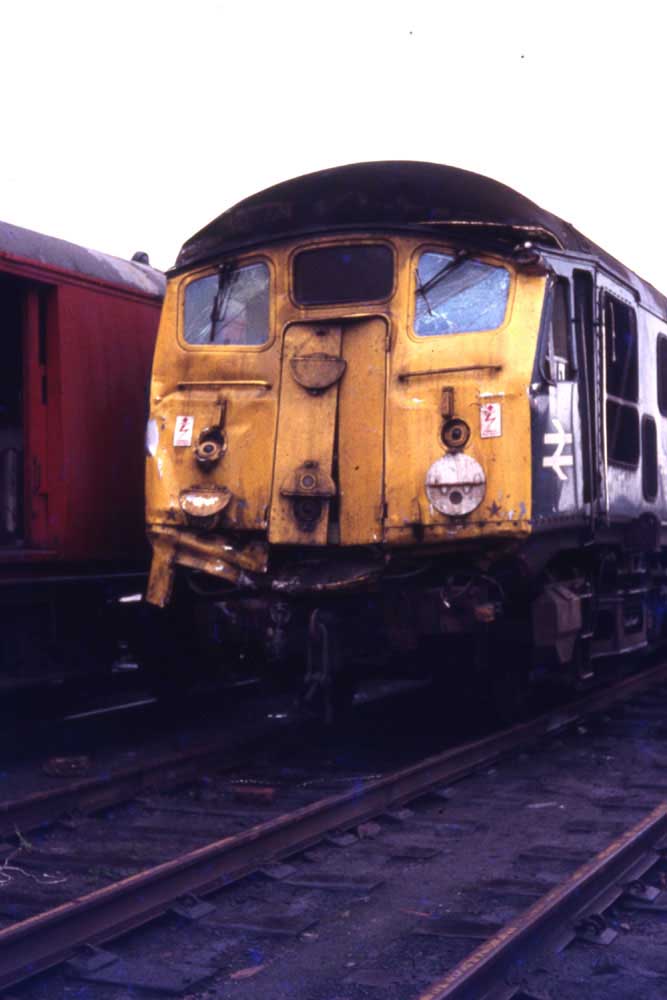
April
A rear-end collision at Kidsgrove on April 27th involved four Class 24ís and led to the death of one railwayman. 5032 & 5145 were in charge of the 1K00 03.55 Crewe - Stoke on Trent newspaper train which had stopped as scheduled at Kidsgrove. It was run into by the 8K52 02.20 Ordsall Lane - Cresswell goods train hauled by 5049 & 5042, this train was under the control of the second man, it was his life lost in the collision when the No2 end cab was crushed back to the bulkhead, which itself was bent backwards into the boiler compartment. The rear vehicle of the newspaper train sustained only minor damage, it also came into contact with the overhead electrified wire. Responsibility for the accident lay mostly with the driver of the goods train who had isolated the AWS equipment, it is believed both crew may have temporarily nodded off on the approach to Kidsgrove. 5049 paid a visit to Derby Works for repairs, gaining a new cab with roof mounted a headcode box.
Uncertain
Believed to be 1973: 5145 noted at Craven Arms with damage to No.2 cab and frame damage. Cab and part of frame removed onsite, reported as August 1973. Noted at Derby Locomotive Works January - March 1974, new cab at No.2 end.
1974
Pioneer 24005 (D5000) was noted at Polmadie late in January with severe damage to one cab.
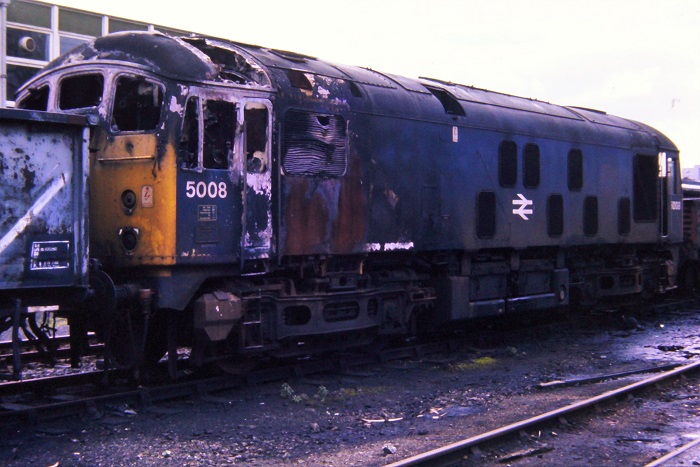
December 27th found 24134 in trouble at Bagillt whilst running light to Chester. A bulldozer had been driven onto the line by vandals which derailed the locomotive, damaging the bogie. The Class 24 was removed to Derby Works for repair.
1975
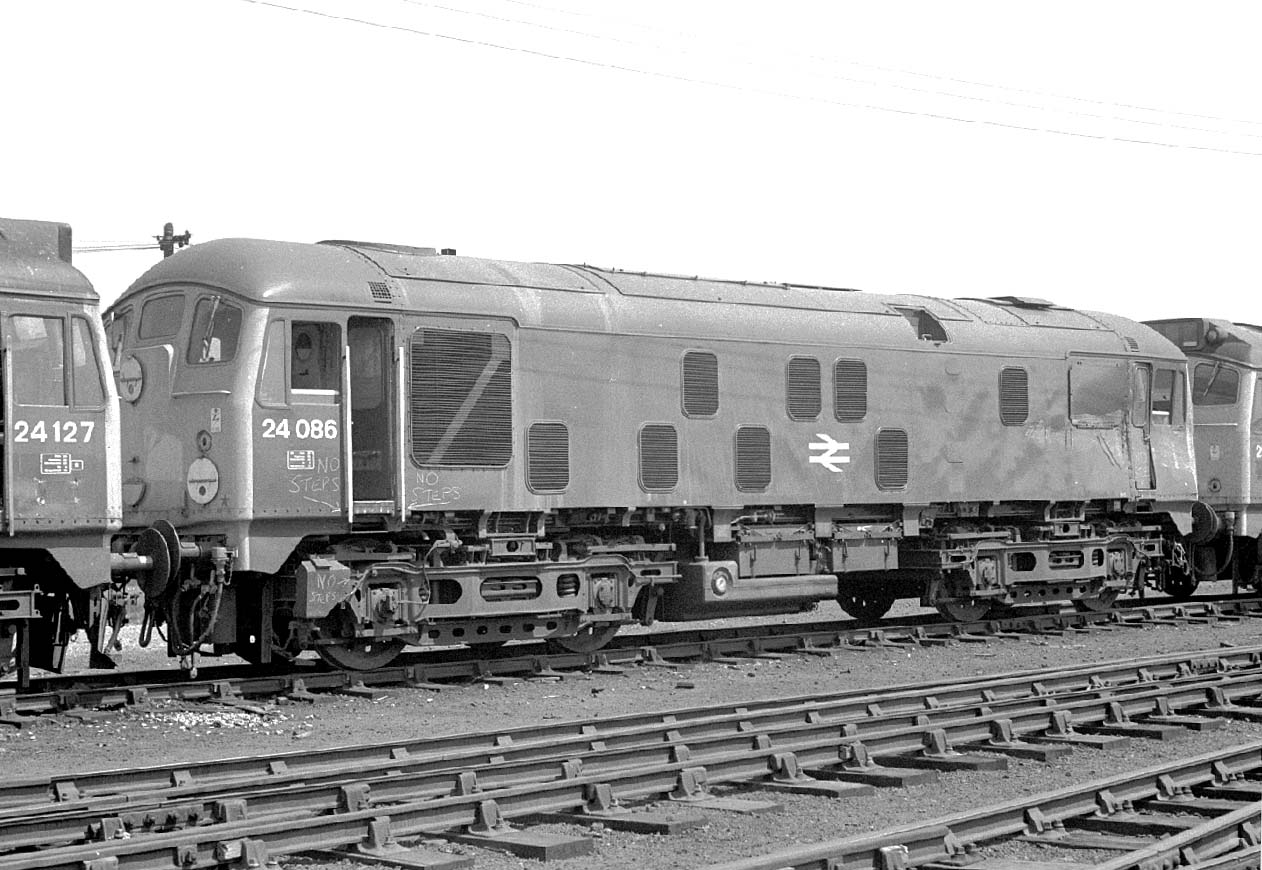
On December 16th 24135 & 24140 were working between Shotwick & Bidston Dock on the iron ore service. They entered Bidston Dock at about 6.30am believing they were the only engines in the yard. However the signalman had let 24089 and another Class 24 into the yard. The two sets of locomotives eventually came into collision with each other, with 24089 and 24135 coming off the worst.
1976
February 1976 - 24083 withdrawn after sustaining damage to the No.2 cab, 2nd man's side.
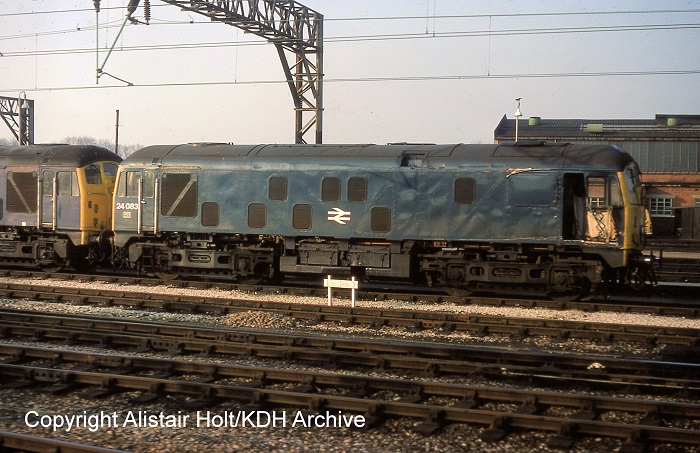
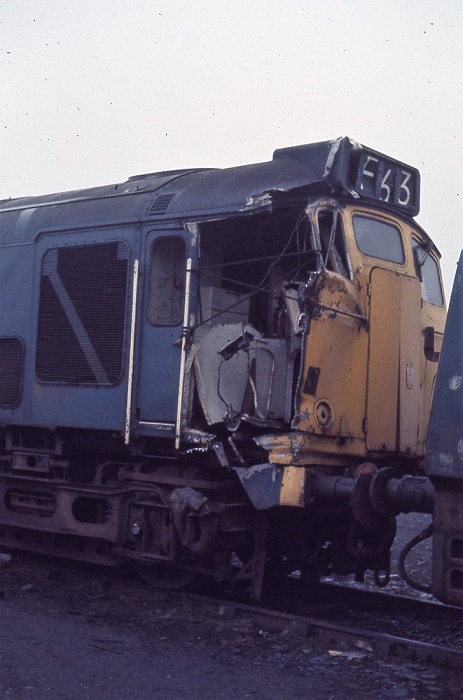
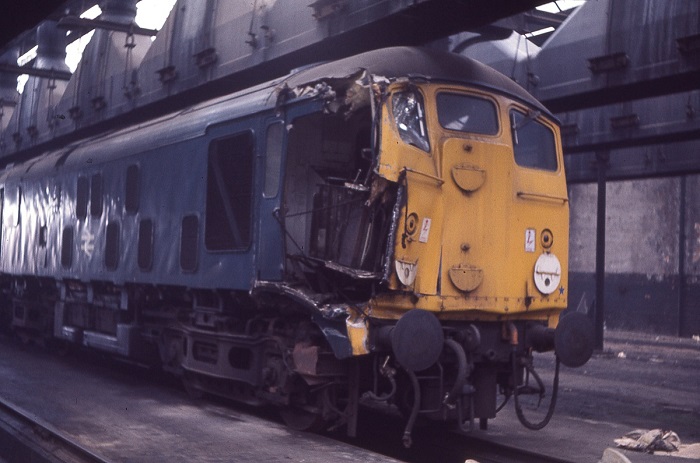
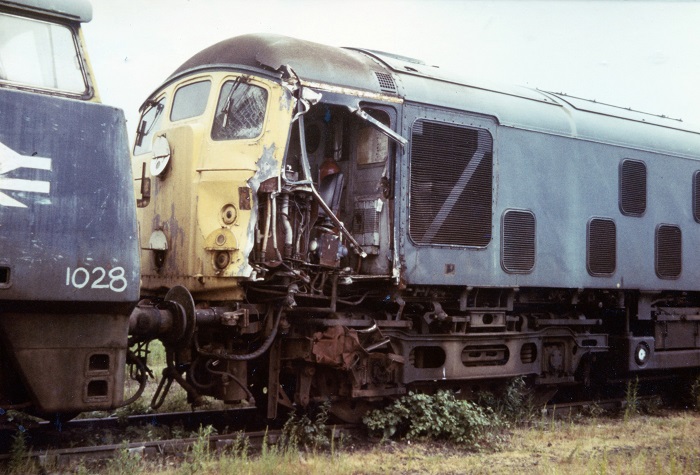
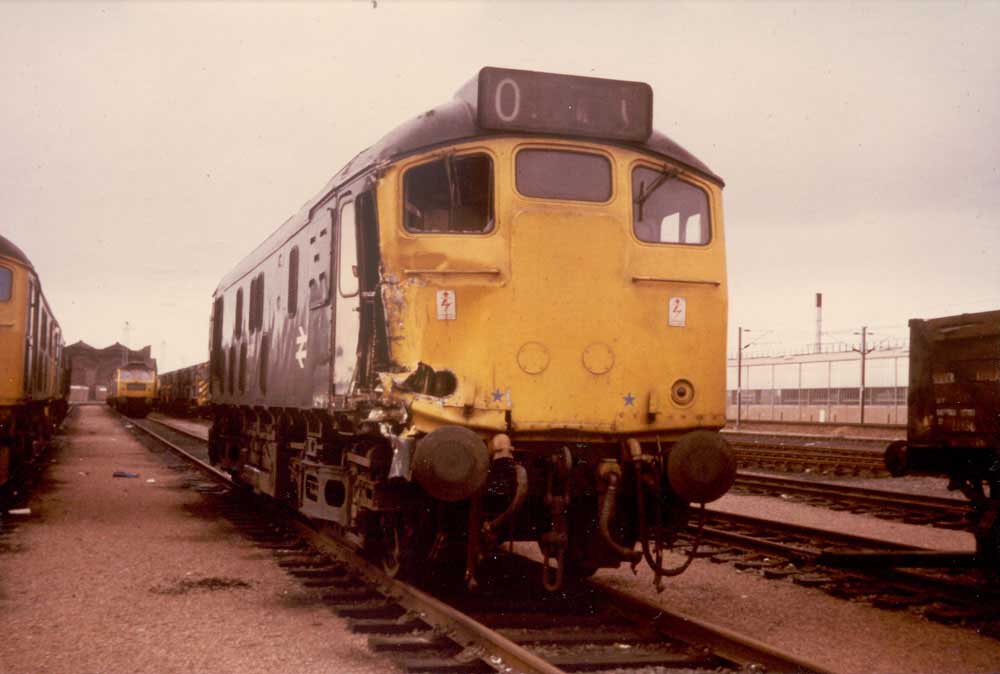
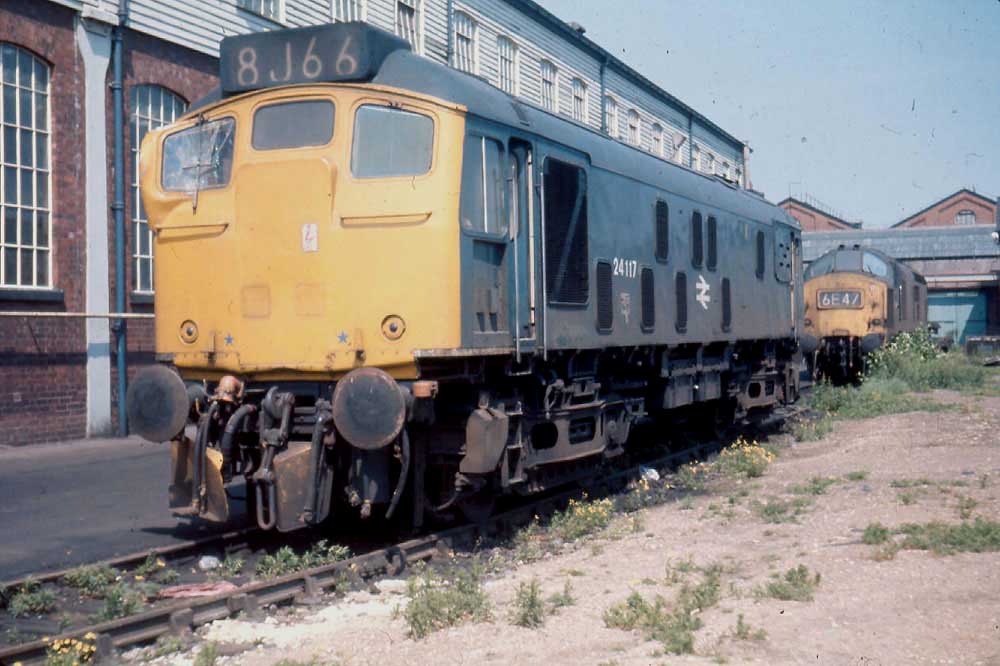
1979
Regrettably from April 10th 24081 would be the last remaining Class 24 in service following the withdrawal of 24063 the previous day. Whilst working the 14.20 Bidston Dock Ė Shotwick iron ore service the locomotive collided, at Shotwick, with some wagons from the local trip working hauled by 25158. All was not lost for 24063 however as it would later surrender its power unit to the Derby Research locomotive, 24061.
Page created February 10th 2001.
Last updated November 16th 2020.